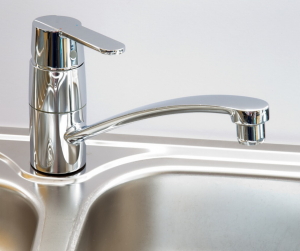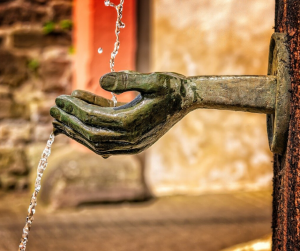Island blog
From the latest bathroom trends, to expert advice & tips on how to look after your bathroom
Why Does the UK Have Two Separate Taps?
If you’ve ever been travelling before, you’ve (hopefully!) had the pleasure of washing your hands abroad. And if you were paying attention, you might have noticed that instead of separate hot and cold taps like we’ve got over here, there was a single mixer tap that let you mix hot and cold together, offering a nice warm stream of water instead of alternately freezing and scalding your hands. Amazing! Many who visit the UK from abroad find this one of the (if not the) single strangest quirks about our country. The UK is one of the world’s only countries to have this set up. Many visitors are left scratching there heads as to why we got to the extra effort of fitting a second tap just to keep hot and cold apart.
Many who visit the UK from abroad find this one of the (if not the) single strangest quirks about our country. The UK is one of the world’s only countries to have this set up. Many visitors are left scratching there heads as to why we got to the extra effort of fitting a second tap just to keep hot and cold apart.  Theories range from a preference of traditional designs over practical use – we’re happier to either freeze or scald our hands if it means having that stately two tap look in the bathroom – to simple ignorance of the fact the rest of the world has moved onSo why do we insist on having two separate taps? It’s actually less to do with style and know-how than with the law.It was (and still is) a legal obligation for a household to have access to drinking water. In many older buildings, hot and cold water came from two separate sources.The cold water came straight from the mains and was considered safe to drink. The hot water was stored in a cistern in the loft, and because of this was considered unsafe (which makes sense – who’d want to drink water that had been sitting around in the loft for however many days where it might have been gathering silt or rust?).The law on clean drinking water went so far as to say that the two streams had to be separated to avoid cross-contamination. Hence a hot tap and a cold tap. (It was even suggested that the hot tap be placed on the left wherever possible to make sure that the visually impaired didn’t accidentally drink potentially contaminated water.)
Theories range from a preference of traditional designs over practical use – we’re happier to either freeze or scald our hands if it means having that stately two tap look in the bathroom – to simple ignorance of the fact the rest of the world has moved onSo why do we insist on having two separate taps? It’s actually less to do with style and know-how than with the law.It was (and still is) a legal obligation for a household to have access to drinking water. In many older buildings, hot and cold water came from two separate sources.The cold water came straight from the mains and was considered safe to drink. The hot water was stored in a cistern in the loft, and because of this was considered unsafe (which makes sense – who’d want to drink water that had been sitting around in the loft for however many days where it might have been gathering silt or rust?).The law on clean drinking water went so far as to say that the two streams had to be separated to avoid cross-contamination. Hence a hot tap and a cold tap. (It was even suggested that the hot tap be placed on the left wherever possible to make sure that the visually impaired didn’t accidentally drink potentially contaminated water.)  Most modern houses have moved away from keeping a cistern in their loft, meaning that hot water is as safe to drink as cold. But old habits die hard, and as far as we’re aware, separate taps will continue to baffle our international cousins for years to come.
Most modern houses have moved away from keeping a cistern in their loft, meaning that hot water is as safe to drink as cold. But old habits die hard, and as far as we’re aware, separate taps will continue to baffle our international cousins for years to come.
Good to Know: What's WRAS All About?
WHO?
— WRAS stands for the Water Regulations Advisory Scheme.— WRAS was incorporated in 2008.
WHAT?
— WRAS raise's awareness and understanding of the UK Water Supply (Water Fittings) Regulations and Scottish Byelaws.— WRAS provide's an approval scheme, as well as processes and guidance, to enable organisations and individuals to demonstrate and show compliance with the UK Water Fittings Regulations.— WRAS approvals are given to bathroom products which meet the UK Water Supply (Water Fittings) Regulations and Scottish Byelaws.
WHY?
— UK Water Supply (Water Fittings) Regulations and Scottish Byelaws safeguard against waste, misuse, undue consumption or contamination of the water supply. — Water companies have been working together for over 100 years to help individuals and organisations comply with byelaws and water fitting regulations.— WRAS contributes to the protection of public health by preventing contamination of public water supplies and it encourages the efficient use of water by promoting and facilitating compliance with the UK Water Supply Regulations or Scottish Byelaws— WRAS approval is the easiest way to validate compliance with the UK Water Regulations and Scottish Byelaws.— Having WRAS approval is like wearing a badge of honor for any bathroom product.
WHERE?
— UK Water Regulations and Scottish Byelaws apply to all premises receiving a public water supply and focus on the passing of water between the boundary of a property and the mains cold supply.— Any water fitting which (when installed) will carry or receive water from the public mains water supply will need to comply with the UK Water Regulations and Scottish Byelaws.— WRAS approval extends to any products which can be connected to a water supply.— WRAS approval is accepted by every water supplier in the UK.— Products which have WRAS approval are widely advertised by brands and retailers.— Products which have WRAS approval will have the 'WRAS Approved Product' logo advertised online or in their product brochures.
HOW?
— WRAS certified approval is issued after a product has undergone significant testing by independent labs and water suppliers (to meet the UK water regulations and bylaws).— Valves, boilers, taps and showers undergo mechanical and water quality testing.— Non-metallic materials & components undergo testing for their effects on water quality.
THE IMPORTANT STUFF
— WRAS approved products are not required when replacing bathroom products to an existing water supply. — If you’re planning on building an extension, which includes a new bathroom or kitchen, and there is an existing water supply then you do not need to install WRAS approved products.— WRAS approved products are required in new builds, building projects and extensions which need to be newly connected to the mains cold water supply. — WRAS approved products are required if you are upgrading a building intended for public use (shopping center facilities, leisure facilities and hotels) regardless of if there is an existing water supply. — If you are responsible for purchasing water fittings for new builds or extensions (which need to be newly connected to the mains cold water supply) or you are upgrading a building intended for public use then you will need to purchase WRAS approved products.— WRAS approved fittings need to be installed to WRAS standards, and by a qualified plumber, in order to uphold full WRAS compliance.— Each WRAS approved product will have a certification and approval letter.
THE IFS & THE BUTS
— There’s no legal obligation for manufacturers or brands to have their products WRAS approved. It’s a voluntary scheme.— Getting products WRAS approved can be costly so some brands and certain products will not have WRAS approval, as well as some product replacement parts.— It’s possible for your WRAS approved fittings to be inadequately installed, this would stop your WRAS approved product from being fully compliant with UK water regulations.— In theory, it’s possible for contractors to legally purchase and install non-WRAS approved products, but it is illegal to run water through them (plus your local water board wouldn't allow it!)— When your local water board comes to check and connect your new water supply, and there are not WRAS approved fittings to carry or receive water from the public mains water supply (or if the fittings are inadequately installed), then the water board will not be able to connect the water supply until there are WRAS approved products fitted to WRAS standards.
OUR ADVICE
If you want to inquire about or need to purchase WRAS approved products, speak to one of our bathroom experts in-store. If you are responsible for purchasing fittings for new builds, building projects and extensions (which need to be newly connected to the mains cold water supply), or you're purchasing fittings for buildings intended for public use, please tell our experts that you need WRAS approved products, they'll be happy to show you a number of available options.
FIND OUT MORE
Visit the WRAS Water Regulations Advisory Scheme website to read more about WRAS approval and water regulations.
